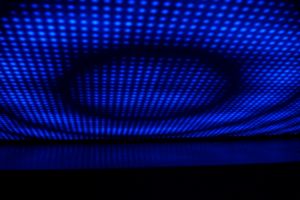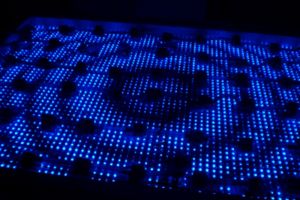Led Matrix: Unterschied zwischen den Versionen
(youtube + bilder aligned) |
|||
| Zeile 37: | Zeile 37: | ||
| − | |||
| − | |||
* http://robots.net/article/983.html article on this board | * http://robots.net/article/983.html article on this board | ||
| − | |||
| − | |||
| − | |||
| − | + | ok .. i2c will not work because via i2c is actually SMBus running at 16khz :( | |
| + | .. but hey what about the OBVIOUS? | ||
| + | there is a parallelport which should give us 8-10 mbit :) | ||
| − | + | linux stuff in the works | |
| − | |||
| − | |||
| − | |||
| − | |||
| − | |||
| − | |||
| − | |||
| − | |||
| − | |||
| − | |||
| − | |||
| − | |||
| − | |||
[[Kategorie:WhateverLab]] | [[Kategorie:WhateverLab]] | ||
[[Kategorie:Projekte]] | [[Kategorie:Projekte]] | ||
__NOTOC__ | __NOTOC__ | ||
Version vom 30. April 2008, 10:32 Uhr
Medien
For the LED Matrix we want to build on the CCCamp2007 we decided to design a GNU LEDMatrix Controller/Driver setup. It will consist of two parts the FPGA board and a several driver electronics boards. Now almost one year later we're still working on it :)
Status
Everything is soldered and it works. We still need to figure out a fast way to get Video data to the matrix.
Specs
72x48 pixels totals 3456 blue leds 54 column driver modules (current source). 1 row driver mudule (current sink)
The 8 rows are each connected to a powermosfet and are driven to ground one at a time (so the matrix is 8times multiplexed). For driving the mosfets we use two Quad-mosfetdriver which in turn are controlled by a 8bit shifting register.
For the columns we take almost the same components except that we have to source current. The mosfets can source up to 250mA but we limit it to about 20mA.
Used ICs
New MiniITX Board
VIA EPIA-PD
- http://robots.net/article/983.html article on this board
ok .. i2c will not work because via i2c is actually SMBus running at 16khz :( .. but hey what about the OBVIOUS? there is a parallelport which should give us 8-10 mbit :)
linux stuff in the works

